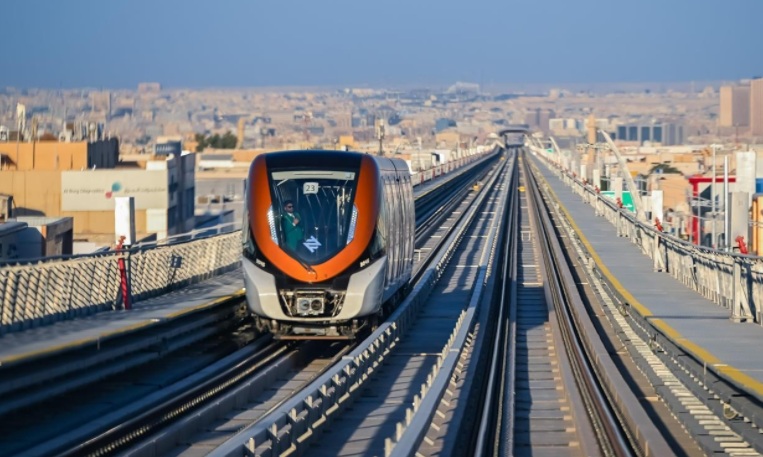RIYADH. The Riyadh Metro network has reached a historic milestone with the launch of its Orange Line, completing the city’s comprehensive six-track system. Stretching 40.7 kilometers along the Madinah Road – Prince Saad bin Abdulrahman I Road axis, the Orange Line stands as the network’s longest track, connecting eastern and western Riyadh from Khashm Al-Aan station to Jeddah Road station.
Currently, five stations are operational on the Orange Line: Jeddah Road, Tuwaiq, Al-Douh, Haroun Al-Rashid Road, and Al-Naseem, with the latter serving as a crucial transfer point to the Purple Line. The Royal Commission for Riyadh City has announced that remaining stations will open progressively. Simultaneously, the Blue Line has expanded with three new stations: Al-Morouj, Bank Al-Bilad, and King Fahd Library.
The network’s comprehensive design includes tracks serving Riyadh’s main arteries. The Blue Line runs along the Al-Ulaya-Al-Batha-Al-Hair axis, while the Red Line serves King Abdullah Road. The Yellow Line connects via King Khalid International Airport Road, the Green Line follows King Abdulaziz Road, and the Purple Line operates along Abdul Rahman bin Auf Road and Sheikh Hassan bin Hussein bin Ali Road.


Ahmed Al-Drees, General Manager of Implementation of the Third Group, reports strong initial ridership on the Orange Line despite limited station openings. The line operates 47 trains with a daily capacity of 112,000 passengers, connecting western residential areas to the airport and financial center. The Orange Line’s strategic positioning allows it to intersect with major network axes, enhancing connectivity throughout the city.
The entire network showcases architectural innovation across its 85 stations, comprising 34 elevated, 4 ground-level, and 47 underground facilities. Each station combines modern engineering with multi-use capabilities, emphasizing both aesthetic appeal and functional efficiency. Upon completion, the network will span 176 kilometers with 84 stations across all six routes, establishing itself as the world’s longest driverless metro system.
The project, which began passenger operations in early December following its November 27 launch, aims to revolutionize public transportation in Riyadh. The Ministry of Transport and Logistics projects that the first phase alone will serve one million passengers daily, marking a significant step toward enhancing urban mobility and connectivity in the Saudi capital.


